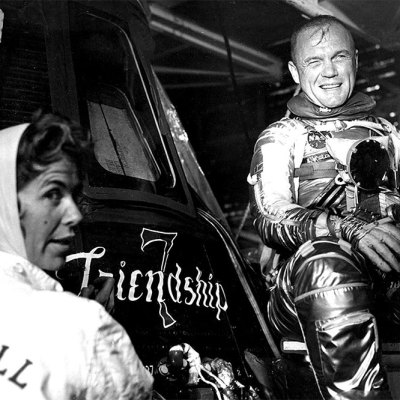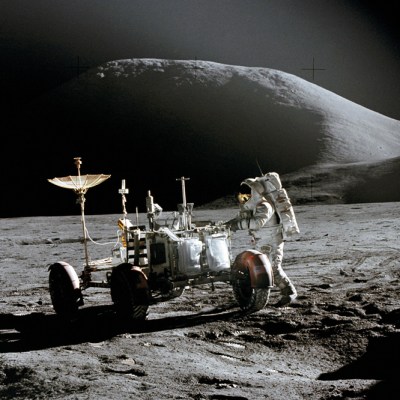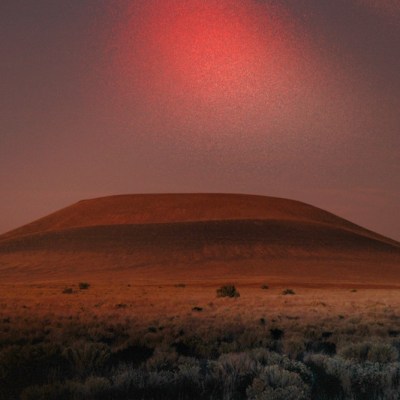

Space Colony. (1981), Andrei Sokolov. National Air and Space Museum, Washington, D.C.

‘Four things to see’ is sponsored by Bloomberg Connects, a free arts and culture platform that provides access to museums, galleries and cultural spaces around the world on demand. Explore now.
Each week we bring you four of the most interesting objects from the world’s museums, galleries and art institutions, hand-picked to mark significant moments in the calendar.
As World Space Week commences on 4 October, this year’s theme, ‘Living in Space’, invites us to contemplate humanity’s boldest aspiration: establishing permanent residence beyond Earth. Since Yuri Gagarin’s pioneering orbital flight in 1961, the dream of space habitation has been moving from the realm of science fiction to tangible possibility, with the International Space Station serving as our first tentative step towards becoming a spacefaring species.
Artists have long been captivated by this cosmic frontier, creating works that oscillate between wonder and trepidation as they imagine humanity’s celestial future. From intimate domestic spaces reimagined for zero gravity to grand visions of orbiting colonies, artistic interpretations of life in space reveal our aspirations and our anxieties at the prospect of leaving our terrestrial cradle. These works are both records of our space-age dreams and speculative blueprints for an extraterrestrial existence that grows more plausible with each passing year.

Etching of the Moon in the Moonwell (1982), Ilinca Cantacuzino
The Cosmic House, London
Commissioned by Charles Jencks for his extraordinary postmodern residence, Cantacuzino’s lunar etching transforms the moon into a benevolent face, accompanied by a three-legged toad taken from Chinese mythology. Drawing on the legend of Liu Hai, the man in the moon who lures the auspicious amphibian from its well with golden coins, this whimsical design reflects humanity’s age-old tendency to anthropomorphise celestial bodies. With its blend of traditional storytelling and imaginative use of architecture, it conceives of outer space as a habitat conducive to life. Click here to find out more on Bloomberg Connects.

Boundless Cubic Aperture (1980–90), Lowry Burgess
deCordova Sculpture Park and Museum, Lincoln, MA
When NASA placed part of Boundless Cubic Aperture aboard the Discovery shuttle in 1989, Lowry Burgess became the first artist to officially have work in orbit. Containing water from 18 rivers, organic materials from across the globe, and all the elements that were then in the Periodic Table, the work carried Earth into space. Now embedded in 400-million-year-old glacial rock at deCordova Sculpture Park and Museum, the sculpture represents a thoughtful exchange between our home planet and the cosmic realm. Click here to learn more.

Soap Bubble Set (1936), Joseph Cornell
Wadsworth Atheneum Museum of Art, Hartford, CT
Cornell’s enigmatic box captured the fragility of our cosmic dreams decades before human spaceflight became reality. The soap bubbles to which his miniature universe alludes suggest both the precarious nature of interstellar ambitions and the childlike wonder that drives them. This ‘armchair voyager’ who never left New York created poignant meditations on celestial exploration through found objects and imagination alone. His work anticipates our current moment as the domestication of celestial bodies edges closer to reality – reminding us that artistic vision often precedes technological achievement. Click here to find out more.

Space Colony (1981), Andrei Sokolov
National Air and Space Museum, Washington, D.C.
As an official Soviet space artist, Sokolov combined scientific precision and speculative thinking to create visions of humanity’s extraterrestrial future with startling verisimilitude. His meticulously researched paintings of orbital habitats and lunar settlements influenced both public perception and scientific planning for space colonisation. Working closely with cosmonauts to ensure accuracy, Sokolov demonstrated how art could serve as both propaganda and genuine vision. His space colonies appear simultaneously utopian and achievable, reflecting the optimism and confidence of an era when space habitation seemed merely a matter of political will and engineering prowess. Click here to discover more.

‘Four things to see’ is sponsored by Bloomberg Connects, a free arts and culture platform that provides access to museums, galleries and cultural spaces around the world on demand. Explore now.

